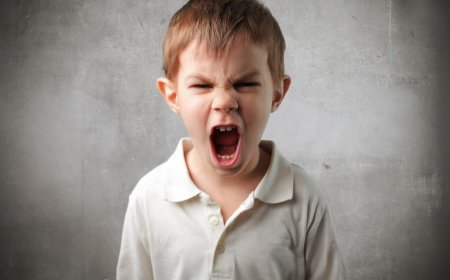How to Handle Your Child’s Anger Issues Effectively
Learn effective ways to handle your child's anger issues with practical strategies, positive communication, and emotional regulation techniques for better behavior.

Anger is a natural emotion, but when children struggle to control it, it can impact their relationships and overall well-being. Parents often find it challenging to handle their child’s anger issues without escalating the situation. Understanding the root causes of anger and responding with patience and the right strategies can help children learn to manage their emotions better. Here are ten effective ways to address your child’s anger issues and foster emotional growth.
1. Identify the Triggers
Understanding what makes your child angry is the first step toward managing their emotions. Keep track of situations, words, or events that trigger anger and find patterns. Whether it’s frustration with schoolwork or conflicts with friends, identifying triggers helps in addressing the root cause.
2. Teach Emotional Vocabulary
Many children struggle with anger because they lack the words to express their feelings. Encourage them to articulate their emotions by using words like “frustrated,” “annoyed,” or “disappointed.” This helps in reducing impulsive reactions and encourages healthy communication.
3. Set Clear and Calm Boundaries
Children need to understand that anger is okay, but aggressive behavior is not. Set firm yet calm boundaries about how they can express their feelings. For instance, hitting or yelling is unacceptable, but talking about their emotions is encouraged.
4. Model Healthy Anger Management
Children learn from their parents. If they see you reacting to anger with yelling or aggression, they are likely to do the same. Show them how to handle frustration through deep breathing, taking a break, or discussing issues calmly.
5. Encourage Physical Activities
Exercise is a great way to release pent-up emotions. Encourage your child to engage in activities like running, dancing, or playing a sport. Physical activities help reduce stress and provide a healthy outlet for their energy and emotions.
6. Use Calming Techniques
Teach your child simple calming techniques such as deep breathing, counting to ten, or visualization exercises. These methods help them pause and regain control when they feel overwhelmed by anger.
7. Listen and Validate Their Feelings
Often, children act out in anger because they feel unheard. Show empathy by listening without interrupting. Acknowledge their feelings by saying, “I understand that you are upset,” which helps them feel validated and understood.
8. Create a Safe Space for Expression
Designate a calm-down corner in your home where your child can go when they feel angry. Fill it with soft toys, books, or coloring materials to encourage self-soothing. This teaches them to take a break rather than react impulsively.
9. Teach Problem-Solving Skills
Help your child understand that anger should not control their actions. Teach them how to find solutions to problems instead of reacting emotionally. Encourage discussions about better ways to handle conflicts and frustrations.
10. Seek Professional Help if Needed
If your child’s anger is persistent and affecting their daily life, seeking professional help from a therapist or counselor can be beneficial. Professional guidance can help identify underlying emotional issues and provide tailored strategies for managing anger.
Conclusion
Handling a child’s anger issues requires patience, understanding, and consistent effort. By identifying triggers, setting boundaries, and teaching effective coping strategies, parents can guide their children toward emotional self-regulation. With the right support, children can learn to express their feelings in a healthy way, leading to better relationships and a more positive outlook on life.




























